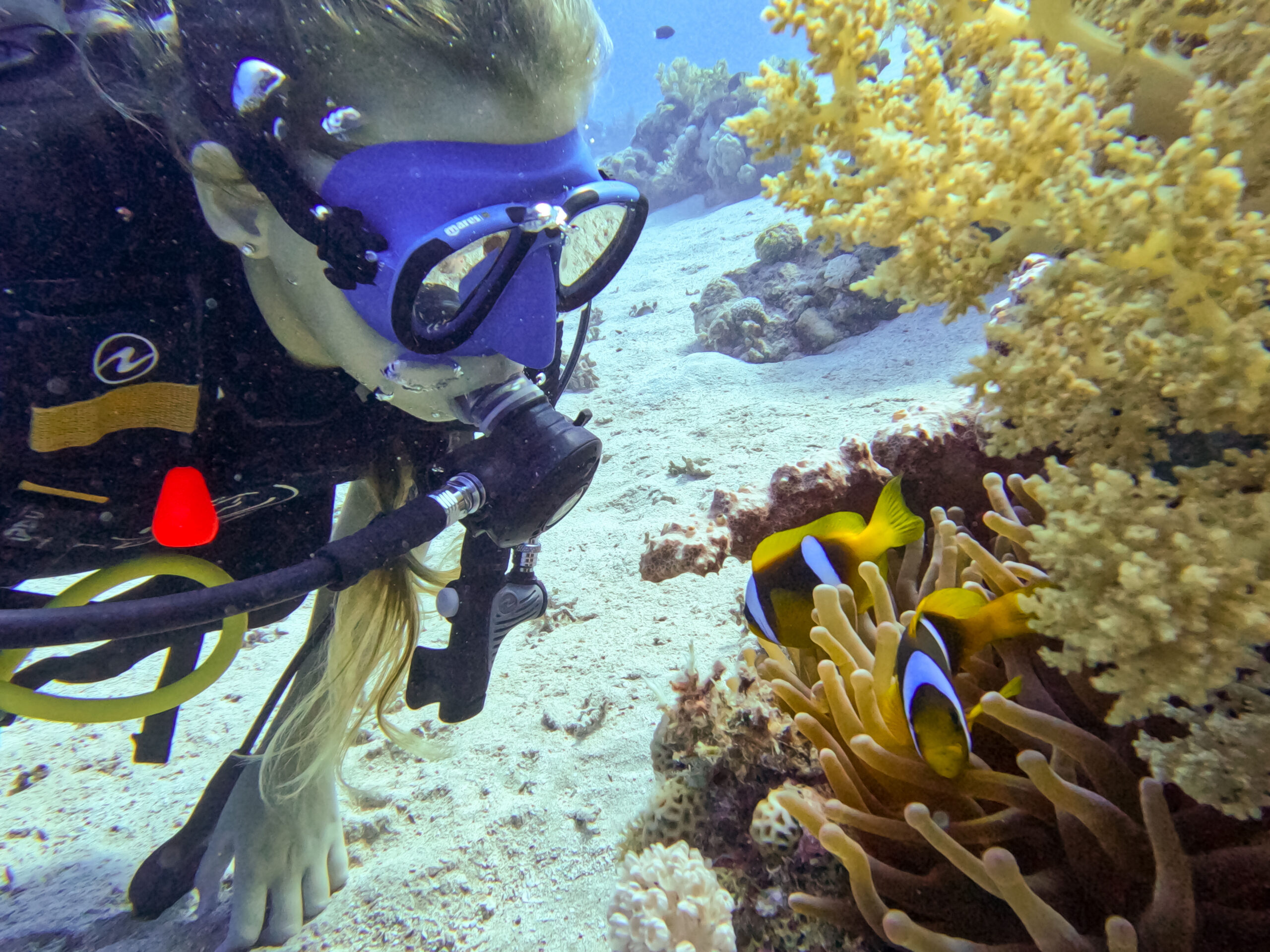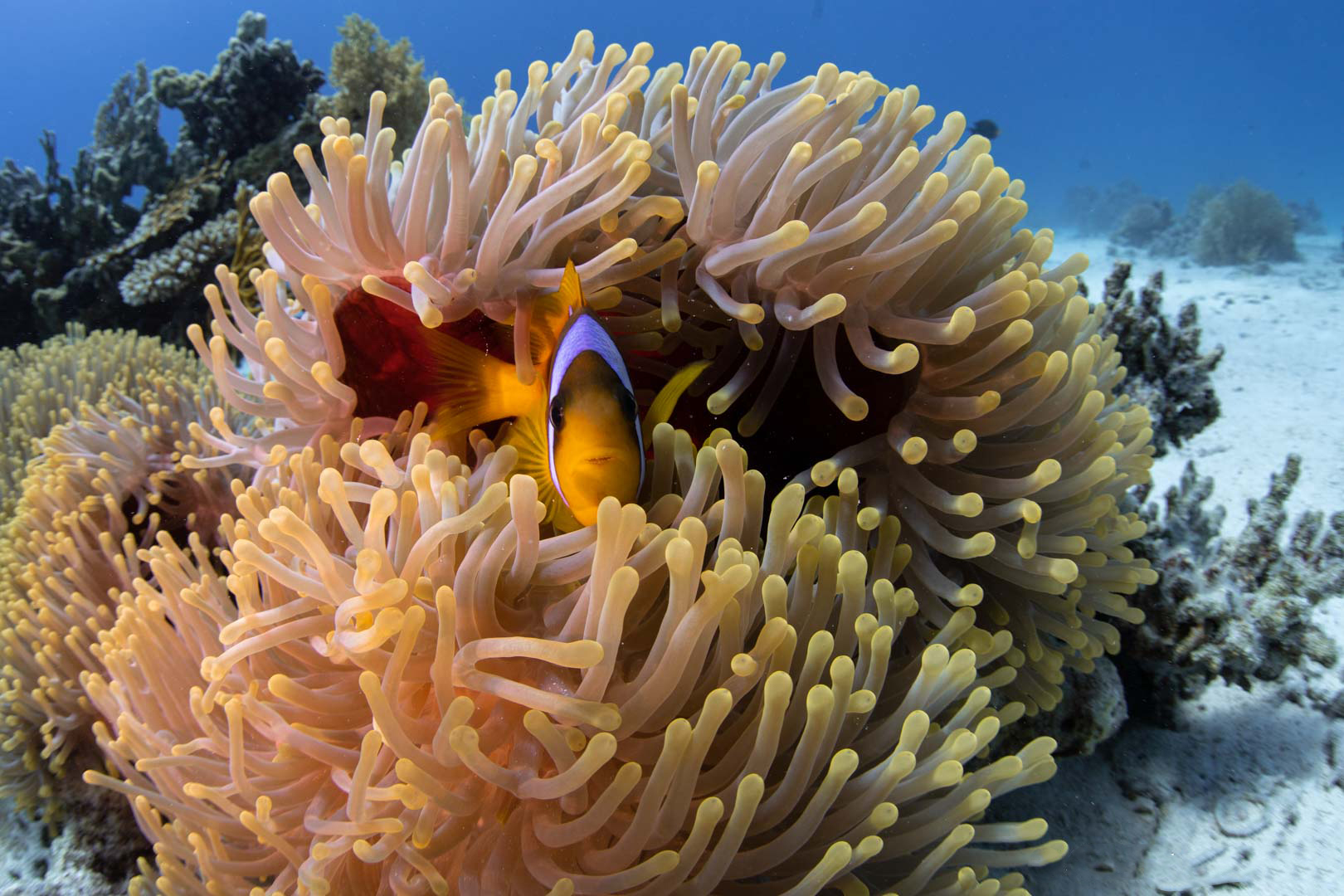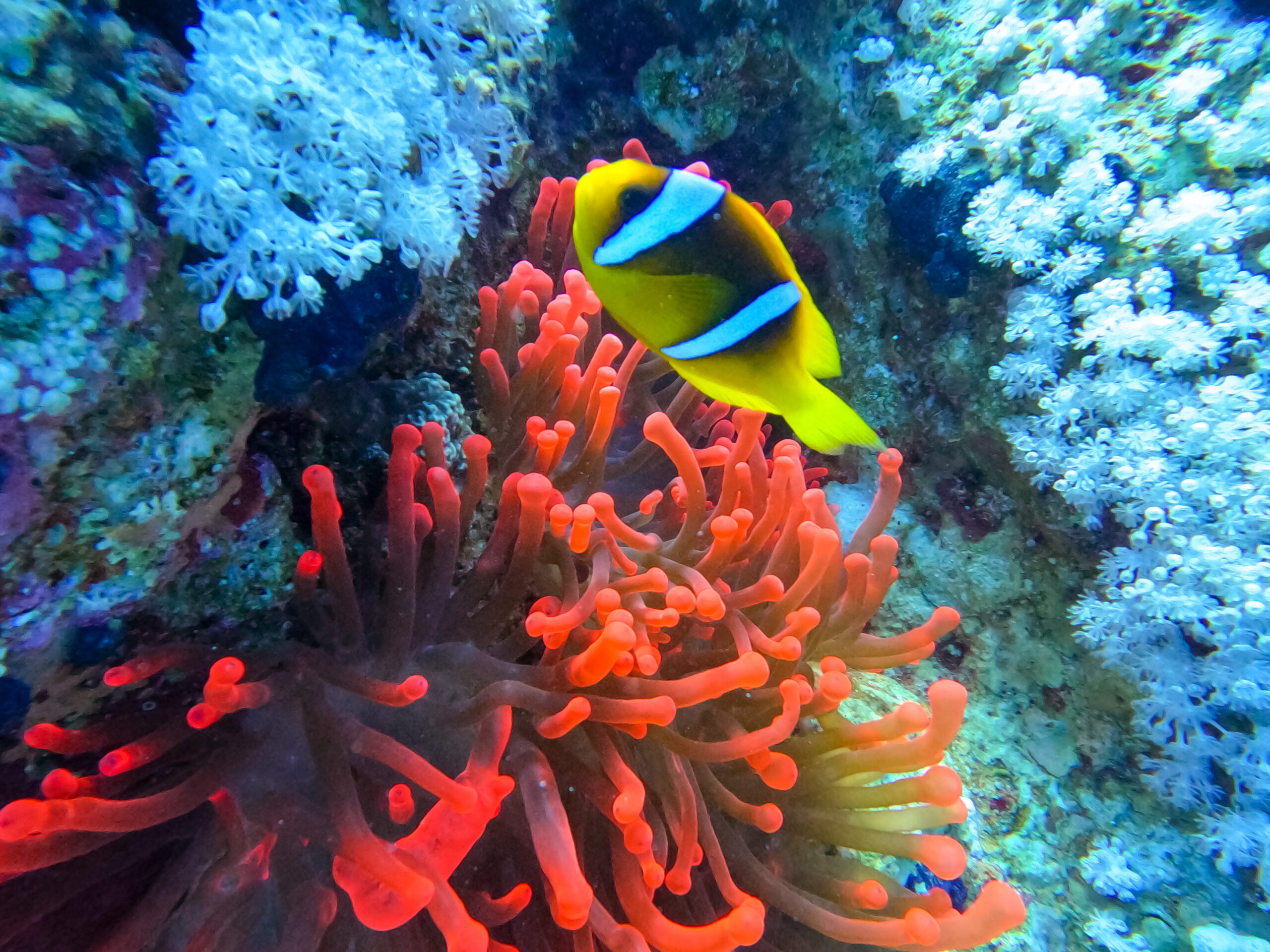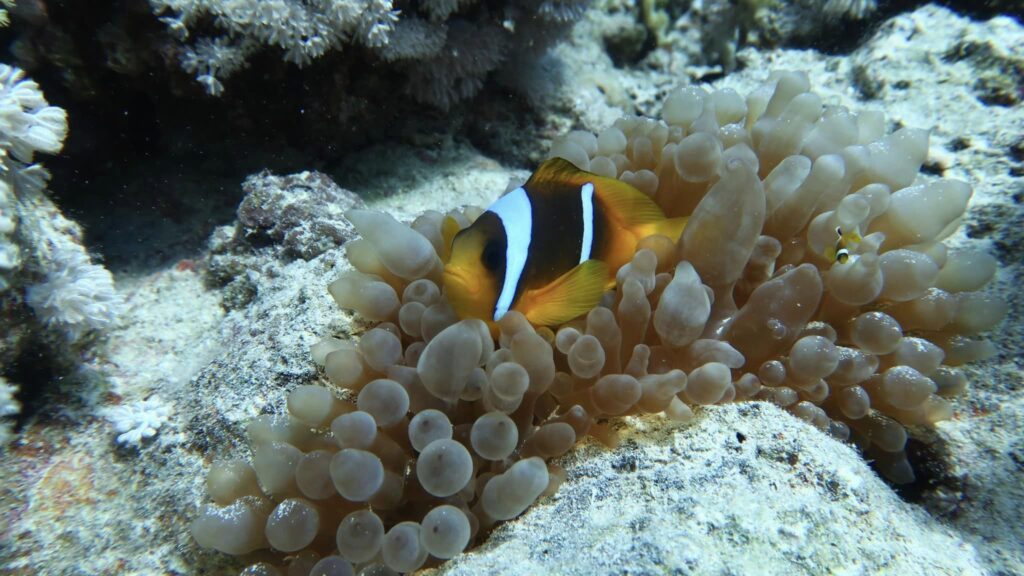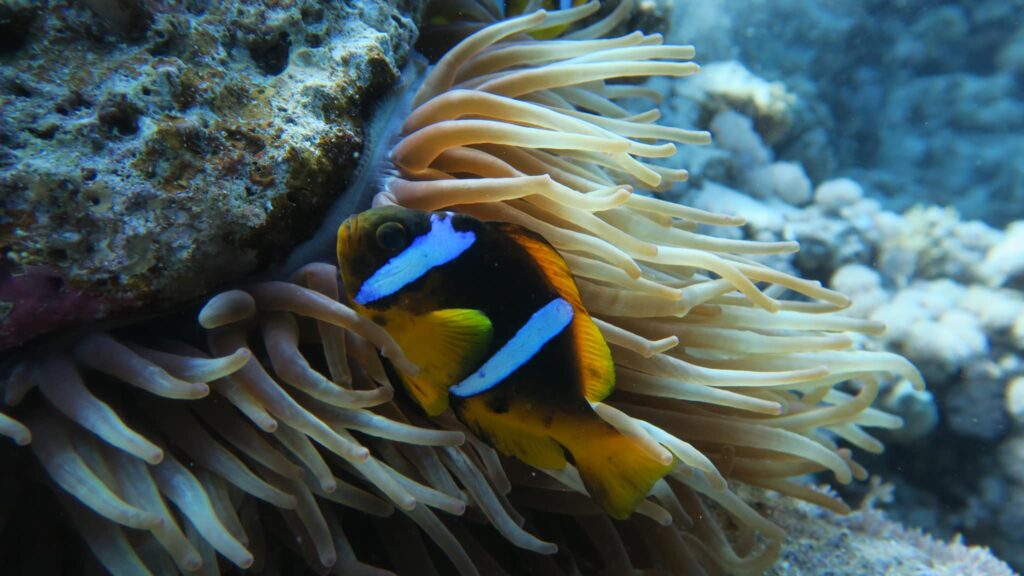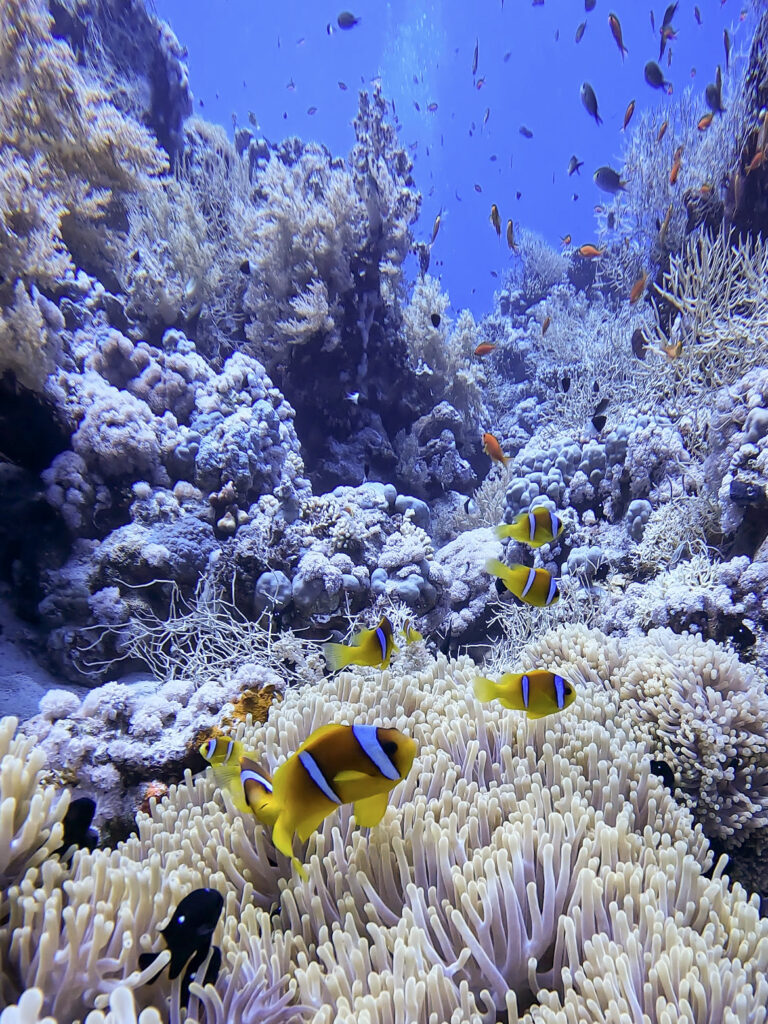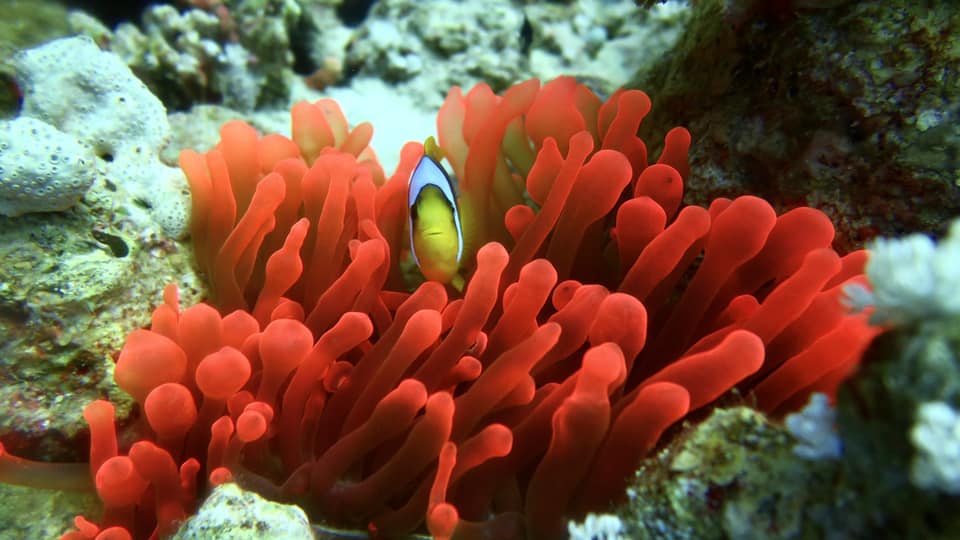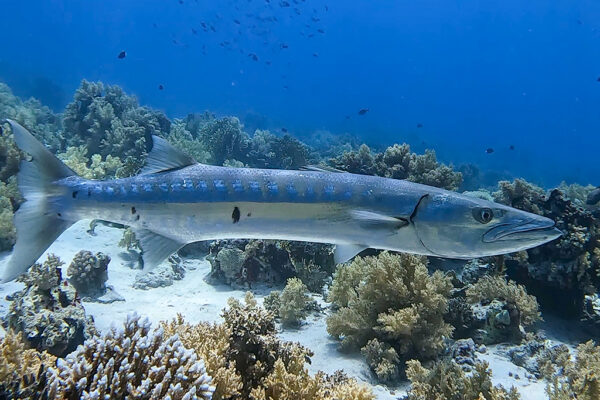Two Band Clownfish and Anemone
Clownfish are quite interesting fish actually! Clownfish are small-sized, 10–18 centimeters (3.9–7.1 in), and depending on species, they are overall yellow, orange, or a reddish or blackish color, and many show white bars or patches. Clownfish are a type of fish that can grow up to six inches in length in a span of 5 to 6 years. Clownfish are a type of fish that typically grow an inch each year.
As the name suggests, the two-banded anemonefish has two white bands or bars, with black edges. Clownfish have some best friends forever too, I mean if we humans can then why can they? One thing is that their friend will always be an anemone! Anemones are actually animals, not plants. They can have many types of besties like Bubble-tip anemones, white beaded anemones, Sebae anemones, magnificent sea anemones, and the giant carpet anemone. And remember when I said best friends forever? Yeah, that’s because they are with each other forever! It is perfect, not just because it’s cute, but because it’s the best for survival!
The anemone provides protection. It provides a sting that can be harmful to other fish, including predators. Luckily clownfish are immune to this sting. Food is also another form they help in because the anemone can get some things clownfish eat like algae, zooplankton, small invertebrates, and other food scraps anemones leave behind.
You can tell if clownfish are pregnant because of some of the following symptoms:
1. Large belly. When the eggs are being produced, the belly of clownfish becomes large.
2. Aggressive behavior.
3. Nesting.
4. Not very active.
Once the eggs are laid the babies will hatch about 10-16 days after but once they do they will only be about
1 or 2 centimeters!
Anemones are cool too so we need to know something about them. Anemones are carnivorous, feeding on tiny plankton or fish. Their stinging tentacles are triggered by the slightest touch, firing a harpoon-like filament called a nematocyst (ne-ma-Tis-is) into their prey. Once injected with the paralyzing neurotoxin, the prey is guided into the mouth by the tentacles. Stinging cells keep away many predators, but some animals can still make a meal of an anemone. Many species of fish, sea stars, snails and even sea turtles have been known to opportunistically feed on anemones. Those are some brave creatures to come against an anemone. Anyone else should stay away unless they want a paralyzing sting!
- A female clownfish will lay between 100- 1,500 eggs (approximately) every two weeks!
- The eggs will only hatch at night.
- Clownfish all start as male but then they turn female!
- We do know that some anemones can live over 100 years. Basically, as long as they’re not poisoned or eaten, they keep on keeping on.

